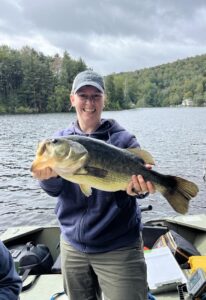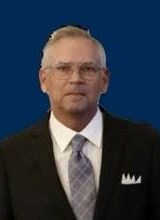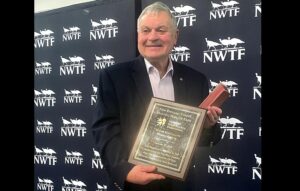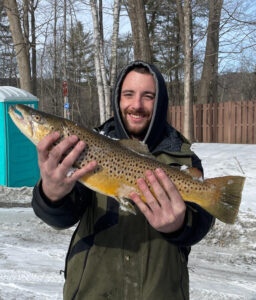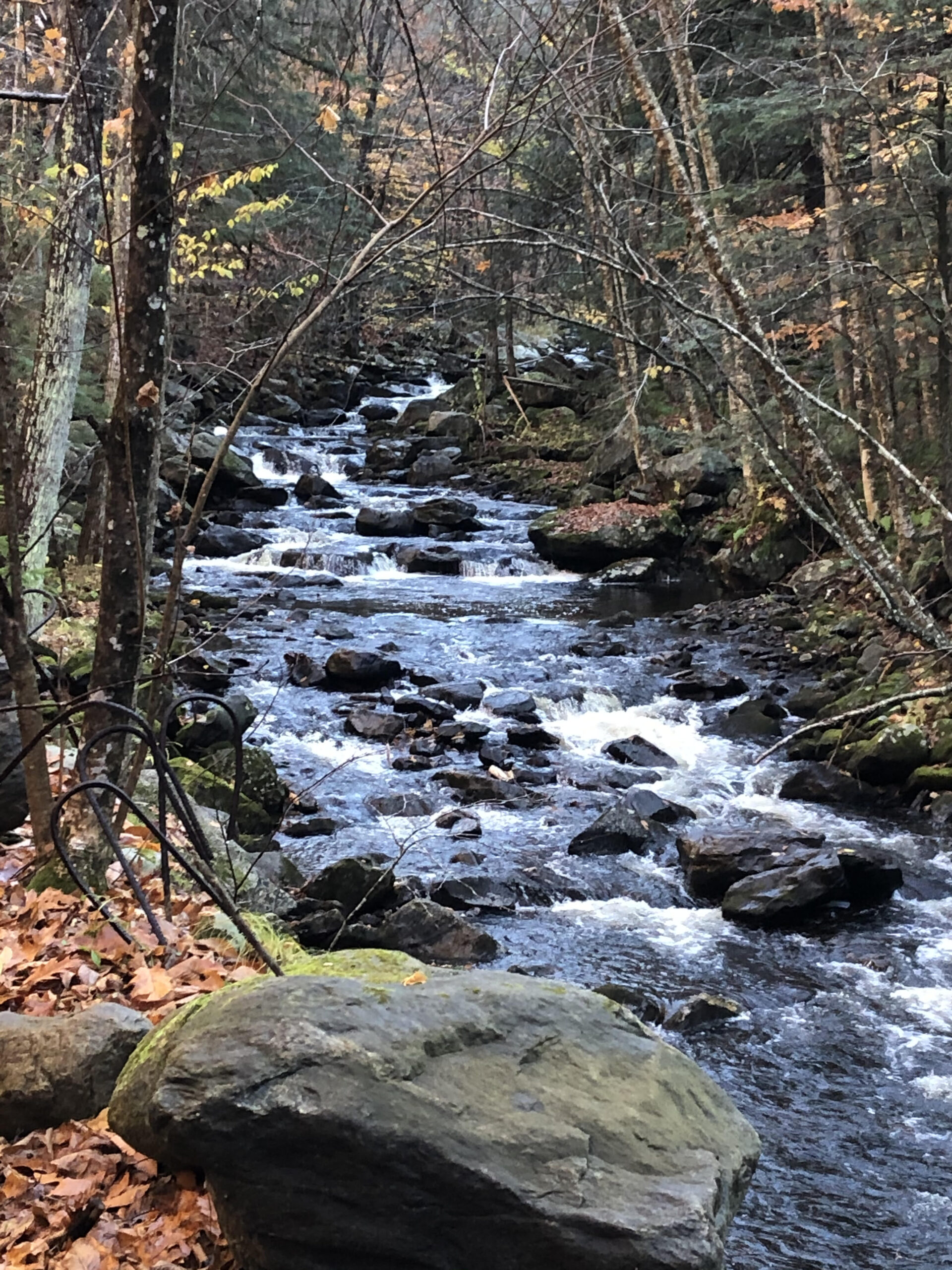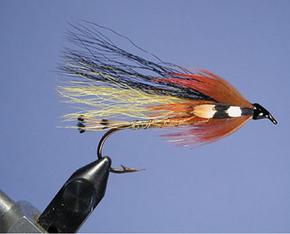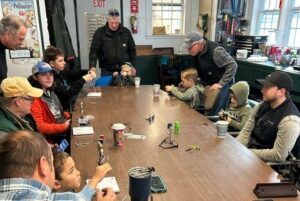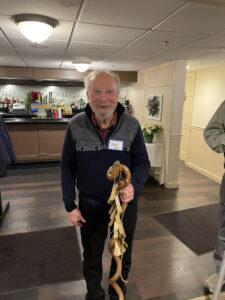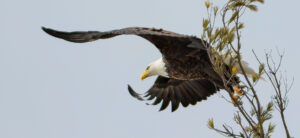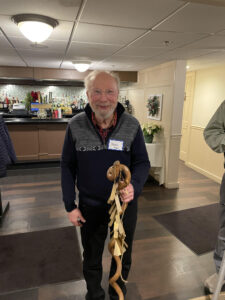At the February 1 meeting of the Berkshire County League of Sportsmen (BCLS) five area outdoor sportspeople were selected to receive prestigious awards. The awards will be presented at the Annual Silvio O. Conte Memorial Dinner on Saturday, April 13 at the Cheshire Rod & Gun Club. (More information to come in a later column, such as time and ticket price).
The winners are as follows:
Leanda Fontaine of Bernardston, MA, was selected to receive the Sportsperson of the Year Award. She is the DFW Western District Aquatic Biologist out of the Dalton Office. Leanda has worked for MassWildlife for 18 years, spending 11 years in the Westboro field headquarters where she worked on the Atlantic Salmon restoration, fisheries population assessment, sampling quality control, and many other programs. She coordinated statewide scheduling of fish sampling in rivers and streams and became an agency expert on fish identification.
In 2016, Leanda came to the Western District to oversee the District’s fisheries programs. She is responsible for coordinating and executing the distribution of stocked trout each spring and fall, organizing personnel and fish for more than 100 stocking runs each year to maximize fishing opportunity for Western District anglers. Leanda has initiated a successful water chestnut pulling project at Three Mile Pond in Sheffield and Smiley Pond in Egremont. She has been an important participant in MassWildlife’s efforts to protect freshwater mussels, conducting surveys and assessments throughout the District. Leanda is the MassWildlife representative on the interagency scientific dive team. She has been a strong resource advocate on issues surrounding Lake and Pond management in the Berkshires. Leanda serves on multiple R3 (Recruitment, Retention, and Reactivation) committees at MassWildlife focused on the expansion of hunting, shooting, and fishing opportunities. She has organized numerous public trout stocking events and coordinated the Learn to Fish clinics in the Western District.
Rick French of Phillipston, MA was selected to receive the John Zuber Award. He has been coordinating the Northern Berkshire Paraplegic Hunts for the last 37 years. Each year, he contacts the landowners to see if they will allow the hunts, leads the team that sets up platforms for the hunters to put their wheelchairs on, sets up blinds, stays in contact with the paraplegic hunters while they are hunting, helps track any wounded deer, helps field dress and drag the deer out of the woods, cuts up the deer, shrink wrap them, etc. In short, he helps to ensure that the paraplegic hunters have safe and memorable hunts.
Without fanfare or recognition, he has been responsible for bringing pleasure to hundreds of deer hunters who otherwise would have not been able to enjoy the thrill of the hunt. That, he will tell you, is reward enough.
Incidentally, this award was established in 2012 to honor the late John Zuber of Pittsfield. He was past president of the Berkshire County League of Sportsmen, past President of the Pittsfield Sportsmen’s Club, the recipient of the BCLS Sportsman of the Year Award and Lifetime Achievement Award, was Secretary of the Massachusetts Sportsmen’s Council and received numerous awards from them. He was well known throughout the State
The late Richard ‘Rick’ Theilig of Lee was selected to receive the Outstanding Achievement Award posthumously. Rick was a member of Lee Sportsmen’s Association for many years and he was its President in 1995. He was very talented with
all disciplines of shooting in archery, rifle and skeet shooting. He was instrumental in running its archery program both indoor and outdoor for many years. He ran many archery leagues and tournaments. He helped build LSA’s youth archery program. In recent years he helped instruct youth archers at the Stockbridge Sportsmen’s Club in its adult archery league. Rick was also a great archery tournament champion traveling all over the country. He passed away in December, 2023.
Ted Pointek of Housatonic was selected to receive the Lifetime Achievement Award. Ted has been the driving force behind the success of the outdoor pistol program at the Lee Sportsmen’s Association. Every match requires 4-5 hours of preparation time. Finding the stages online, making sure they work, managing the roster, loading the supplies, preparing targets, purchasing supplies and doing the needed financial paperwork for the club.
On match day, he is always the first to come and last to go, 8:00 am till about 4:00 pm, ensuring the range is in better shape than he found it. Then Ted pours through the scores and unusually posts them the same night to all the match participants.
Every target and wall stand has been constructed or modified by Ted in his shop. All winter Ted works on making more shooting equipment or something to organize the shooting equipment.
Every match Ted brings an entire tool truck that is used to help set up and break down the match. Recently Ted re-engineered all the steel targets to reduce the possibility of sprawl and ricochets going upward. He often makes trips to the club on non-match weekends to do ground work or work on the targets or bays. Considering there are 3 matches, 2 -USPSA matches and 1- steel challenge a month (about 60+ man hours per month), his accomplishments speak for themselves.
James Loughman of Adams was selected to receive the Sportsmen’s Achievement Award. Jim has been a long-time member, and current Secretary of the Adams Outdoors for Youth (AOFY). He has volunteered at AOFY fishing/ice fishing events and its game dinners for roughly 20 years.
He has also been a member of the Cheshire Rod & Gun Club for nearly as long. He has served on the Board of Directors (including as Newsletter Editor and President) of the former Hoosick Chapter of Trout Unlimited for several years.
He is an enthusiastic fisherman, ice fisherman and forager of wild edibles, Jim is grateful for all of the work that organizations like AOFY do to instill a love of the outdoors in the next generation of sportsmen.
The 40th Annual Springfield Sportsmen’s Show coming soon
The show takes place at the Eastern States Exposition (Big E) 1305 Memorial Ave., West Springfield, MA on February 23 through 25. The show hours are Friday from noon to 8 :00 pm, Saturday 9:00 am to 7:00 pm and Sunday 10:00 am to 5:00 pm. Admission: Adults – $15, Kids 6 to 12 – $5 and under 6 free.
Billed as the largest pure hunting and fishing show in the Northeast, it is filled with hundreds of booths, seminars, and action areas. The show is filled with an outdoorsman’s dream of fishing and hunting gear, outfitters, charter boats and adventure destinations, along with great deals on fishing boats, ATV’s and UTV’s. There will be great attractions and displays such as The Northeast Big Buck Club, Trout Pond, and more.
This year there will be a new bass speaker at the Fishing Seminar lineup. Spencer Cookson is the owner/operator of Berkshire Bass, which is a tackle shop, guide service and tournament series located in Sheffield. Spencer is going on his 4th season of professionally guiding in the Berkshires for Largemouth and Smallmouth bass on some of the state’s best fisheries. While at the show, you may want to book a trip with him.
Archery Tournament
The Stockbridge Sportsmen’s Club has scheduled a 300 Round Indoor Archery Tournament – Berkshire Championship on February 24 – 25. Shooting times are Saturday February 24 at 6:00 pm and Sunday, February 25, at 9:00 am or 1:00 pm. The Youth Shoot starts at 11:00 am on Sunday. For more information contact John Mange (518)265-1872 or John Davis (413)446-9012.
Shoots coming up
The Great Barrington Fish & Game Club is having Ham Shoots starting this Sunday, February 18 and running every Sunday until March 24. Shoots start at noon, call-in signs-up start at 10:00 and walk-ins at 9:30 am. Cost is $4.00 per shoot. In addition to ham, prizes include beef roasts, pork loins, and more. Food will be available at the shoots.
The Lenox Sportsmen’s Club will be holding its Annual Ham Shoots starting on Sunday March 3 and running every Sunday until Easter. You are invited to enjoy an exhilarating day of target shooting paired with some scrumptious food, exciting raffles and even more.
The Lee Sportsmen’s Association will be holding Turkey Shoots on the following Sundays: March 3, 10, 17, 24, and April 7, from 1:00 pm to 4:00 pm. Prizes include NY strip steaks, turkeys, pork loins, spiral hams, and money shoots. $3/shot-meat & $3/shot-money shoot. Lunch available for purchase. Contact President Doug Frank at (413) 822-6490 with any questions.

